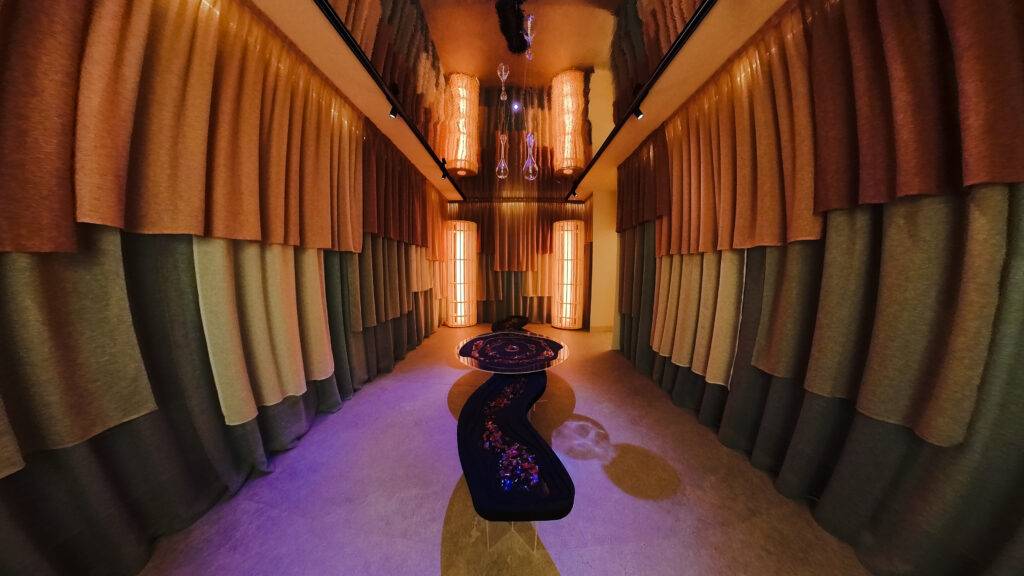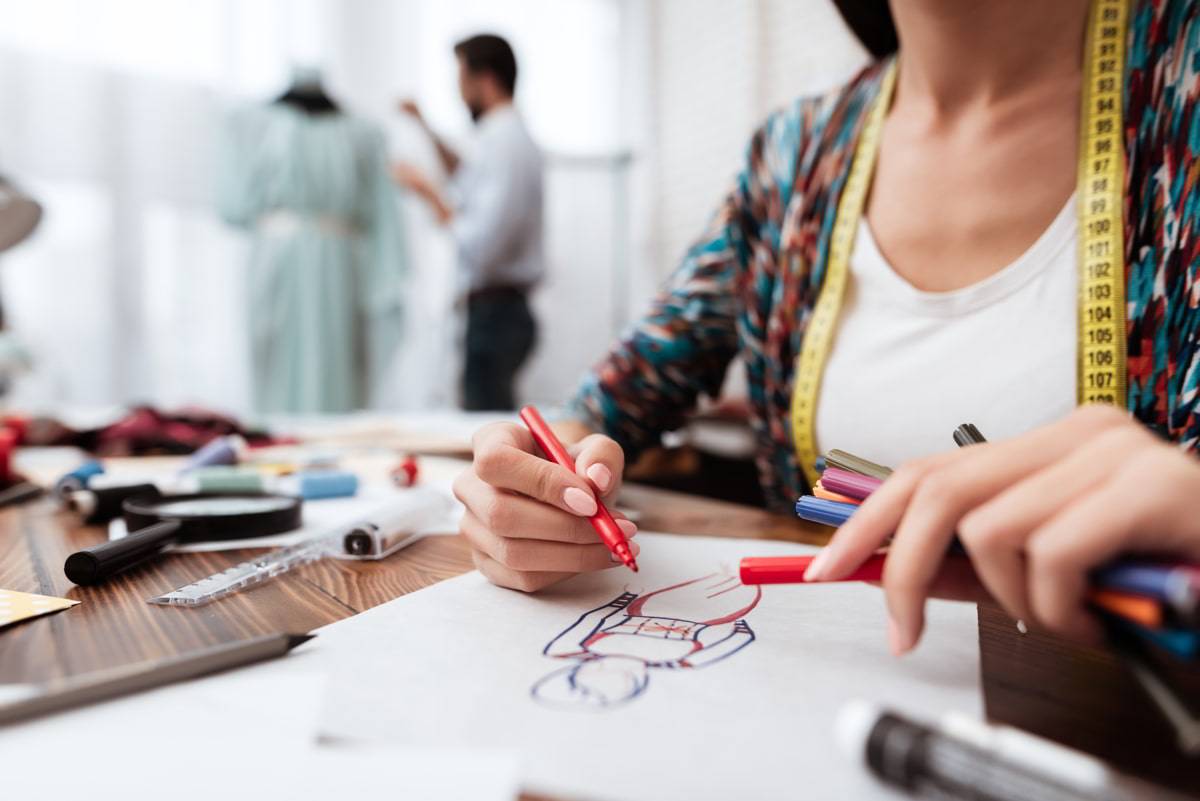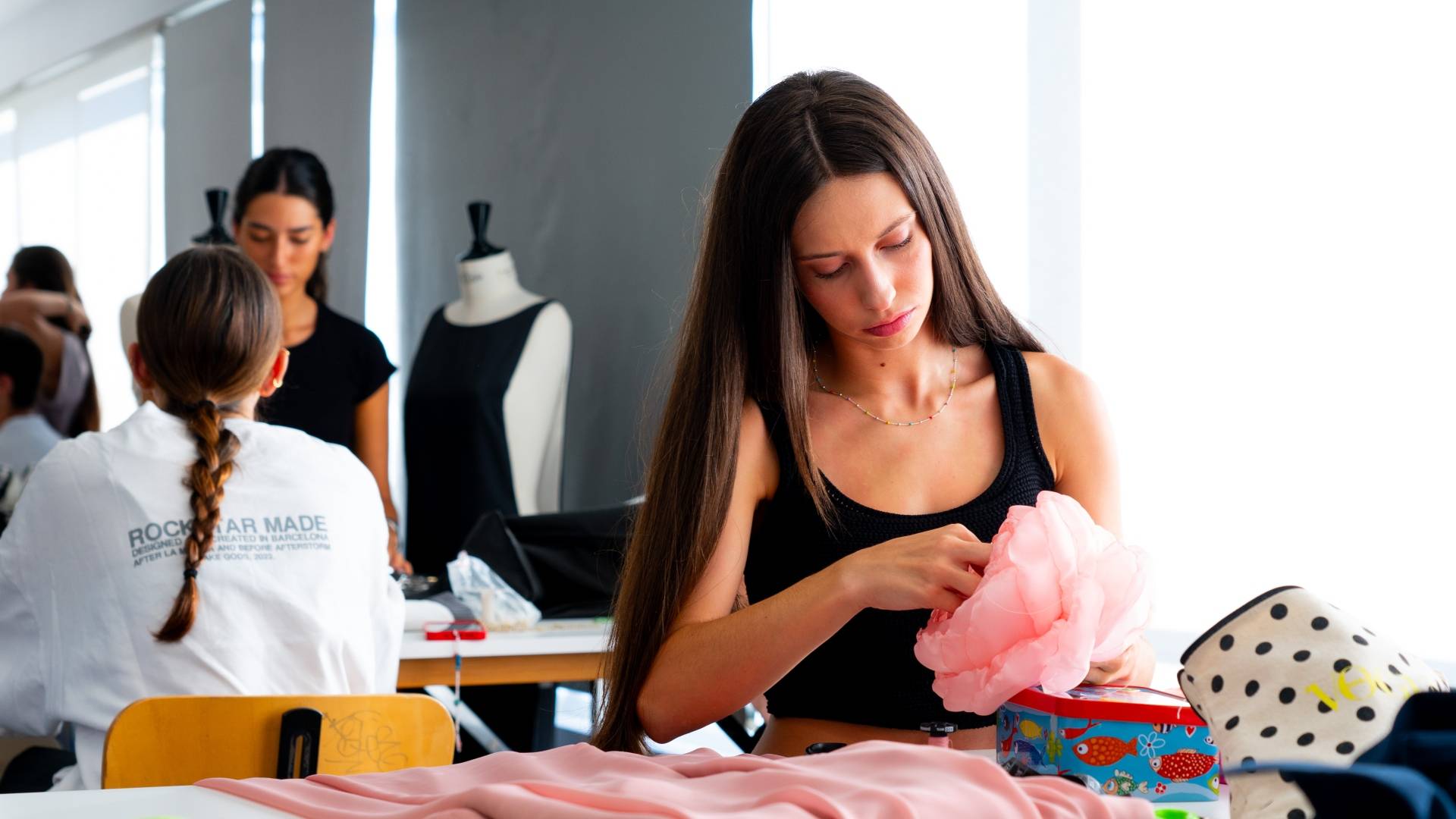Career opportunities in Interior Design (Guide 2025)
Choosing where to study Interior Design weighs as much as choosing the career itself. You already know that you are passionate about well-designed spaces. Now you need clear answers: what does an interior designer really work in today? What career opportunities are there in Spain? What are companies looking for? How do I build a portfolio that will open doors?
Here is a straightforward, straightforward guide, designed to help you decide with criteria. Whether you are considering starting with a Degree in Interior Design or you are looking to specialise later on with a Master's Degree in Interior Design, this information will help you understand what career paths are open to you.
What does an interior designer do today?
An interior designer thinks, designs and executes spaces that work. They don't just decorate: they solve real problems.
He or she starts from a briefing with the client's specific needs. He orshe defines a solid concept, translates these ideas into plans, renderings and precise measurements, adjusts the budget to make the project viable, coordinates with suppliers and the building site and delivers the space ready for use.
His goal is always the same: to achieve wellbeing, functionality and aesthetics with solutions that can actually be built.
He works closely with teams from architecture, engineering, FF&E (furniture and equipment), lighting, carpentry, installers, facility managers and brands. It handles basic regulations such as the Technical Building Code (CTE), materials, applied sustainability, acoustics and lighting. And increasingly, it integrates smart space technology: light control, air quality and environmental comfort.
Where there is work: sectors with the highest demand
Residential and integral refurbishment
Homes designed for efficiency, comfort and the personality of the people who live in them. Projects include complete redistributions, bespoke kitchens and bathrooms, thermal and acoustic insulation, lighting schemes and selection of durable materials that age well.
Corporat e
Hybrid and flexible offices that favour both concentration and collaboration. Spaces that care for the well-being of teams. This includes fit-outs (adaptation of entire floors), reorganisation of work areas, acoustic solutions and technical furniture that responds to new ways of working.
Retail and ephemeral spaces
Shops, pop-ups and corners that tell a story and, above all, sell. Here, brand identity, the customer journey, lighting that enhances the product, strategic window dressing and materials resistant to heavy traffic are important.
Hospitality & tourism
Hotels, hostels, tourist flats and food and beverage (F&B) spaces. The design encompasses rooms, common areas, professional kitchens and terraces. The three pillars are durability, easy maintenance and memorable guest experience.
Education, healthcare and administration
Classrooms, libraries, laboratories, medical practices and waiting rooms. These are spaces where environmental comfort, universal accessibility and clear signage make a difference in people's daily lives.
Real estate & property
Showrooms, show homes, home staging and improvement of real estate assets. The aim is to accelerate the sale or rental by demonstrating the real potential of each space.
18 career opportunities in Interior Design
1. Residential Interior Designer
Defines the layout, selects materials and coordinates works in dwellings. Their main tasks include surveying the current state, proposing new floor plans and elevations, and drawing up the technical report with the project's measurements.
2. Contract / commercial interior designer
Specialises in spaces for companies: offices, clinics, academies, shops. In charge of space planning (space organisation), compliance with basic regulations and coordination with the engineering teams.
3. Workplacedesigner / space planner
Optimises office floors for teams working in hybrid mode (face-to-face and remote). Tasks include usage analysis, quick test fits (layout tests), definition of furniture standards and improvement of acoustics.
4. Retail designer
Designs shops and corners with an absolute focus on customer experience and conversion into sales. Works on the shopper's journey, display furniture and lighting that highlights the product without saturating it.
5. Hospitalitydesigner (hotels & F&B )
Creates interiors for hotels, restaurants, cafés and bars. Tasks include mock-ups of rooms (real prototypes), choice of high-strength finishes and coordination of the complete FF&E.
6. Kitchen & bath designer
Specialist in technically well-resolved and easy-to-maintain kitchens and bathrooms. Mastered technical design, plumbing and ventilation installations, and the choice of surfaces that withstand daily use without deterioration.
Lightingdesigner (interior )
Designs lighting that enhances the space and cares for people's visual comfort. Develops lighting schemes, performs basic calculations of lux and colour temperature, and selects the appropriate luminaires for each area.
8. FF&E specialist (furniture and equipment )
Manages catalogues, prototypes and purchases with strict control of costs and deadlines. Prepares technical data sheets, draws up purchasing schedules and supervises the control of samples and deliveries.
9. Home stager
You fit out homes to speed up their commercialisation. Proposes quick and cost-effective interventions, selects the necessary props and coordinates the final photo shoot to be used on real estate portals.
10. Museography and exhibition design
Designs exhibitions, exhibition stands and cultural spaces. Build spatial narratives, design intuitive visitor flows and develop modular systems that adapt to different contents.
11. Window dressin g
Creates showcases and temporary installations that capture attention. Develops seasonal concepts, executes express assemblies and designs high visual impact lighting for the street.
12. Scenography (events/TV/theatre )
Build environments that support an audiovisual narrative. Works with mock-ups and renders, selects light and transportable materials, and coordinates assembly teams under tight deadlines.
13. Technicaldesigner / documentation
Ensures that the project can be built exactly as designed. Develops precise construction details, prepares comprehensive measurements and prepares the necessary documentation for tenders and construction work.
14. BIM / 3D interior specialist
Models and coordinates projects in collaborative working environments. Proficient in Revit modelling, creates customised furniture families and links to architectural and facility models (MEP).
15. Visualisation (VR/AR and renders )
Convert the project into immersive images and experiences that help the client make decisions. Works on 3D modelling, realistic texturing, photographic rendering and virtual reality tours.
16. Sustainability & materials consultant
Advises on sustainable materials, circularity and environmental comfort. She prepares environmental product sheets, proposes responsible finishes and defines maintenance criteria that extend the useful life of the space.
17. Interior design project manager
Plans, controls costs and deadlines, and coordinates the entire project. Develops detailed schedules, compares offers from suppliers and leads weekly site meetings with all teams involved.
18. Facility & post-occupancy
Measures how the space is actually used after handover and proposes continuous improvements. Conducts occupancy surveys, designs micro-interventions to optimise areas and coordinates preventive maintenance.
Emerging profiles gaining traction in 2025
Smart spaces and IEQ (Indoor Environmental Quality )
More and more projects are calling for the integration of sensors and basic control of the indoor environment. The interior designer who understands what to measure and why - CO₂, lux levels, acoustic reverberation - brings differential value and dialogues on an equal footing with engineering and facility management.
Advanced visualisation and digital twins
Clients decide faster when they can "walk" through the space before it exists. Knowing how to prepare a clean model and a useful (not just visually beautiful) VR walk-through makes a real difference to the project approval rate.
Applied sustainability consultancy
It's not about "going green" for the sake of trend. It's about choosing solutions that last, hold up well and improve people's real comfort. Such criteria, backed up with clear numbers and technical arguments, open doors in demanding studies.
Skills demanded by companies
Hard skills
- Project: Spatial distribution, ergonomics, finishes, furnishings and complete descriptive memory.
- Documentation: Technical drawings, construction details, precise measurements and accurate budget.
- Software: AutoCAD or equivalent for documentation; 3D modelling in SketchUp, 3ds Max or Blender; rendering engines such as V-Ray, Corona or Twinmotion; and introduction to BIM with Revit.
- Lighting and acoustics: Basic criteria of lighting and acoustic design, and ability to read and interpret installation plans.
- Sustainability: Knowledge of materials, maintenance, thermal comfort and real durability of finishes.
- Technology: Notions of home automation and IoT aimed at improving the end-user experience.
Soft skills
- Clear communication: Explaining design decisions and listening to the client's needs without impositions.
- Time management and suppliers: Meet deadlines and coordinate deliveries without losing quality.
- Multidisciplinary teamwork: Collaborate with architects, engineers, installers and manufacturers.
- Visual presentation and storytelling: Telling the project in a way that excites and convinces.
- Professional rigour: Measuring, budgeting and documenting without gaps or improvisations.
Process and portfolio: what is expected of you
A portfolio that works shows process and results, not just pretty pictures. Companies want to see how you think, how you solve problems and how you get from initial concept to final delivery.
Key deliverables
- Moodboard with real materials: Include physical samples or technical references. Explain why you chose each material.
- Clear plans: Plan, elevations and construction details with precise dimensions. Buildable from your documentation.
- Realistic renderings: That represent light and materials faithfully. No unrealistic images that later disappoint.
- Indicative measurements and budget: Show that the project is economically viable. Clients value knowing "how much it costs to build this".
- Brief and to the point: Explain design decisions and maintenance guidelines. No unnecessary frills.
Practical advice
Choose 3-5 projects and tell them well. Show the before and after. The initial problem and the implemented solution.
Include impact data when you can: "We improved storage by 40%", "We reduced reverberation to comfortable levels", "We increased natural light by 60%". The numbers speak.
Add a process page with initial sketches, design iterations and materials testing. Show that you have thought through every decision.
Close with a credits and roles sheet: what exactly you did and what other contributors did. Professional honesty scores points.
First steps in the industry
Start with internships, collaborations with small studios, competitions for students and initial assignments with a very limited scope. The important thing is to add real cases that you can show and professional references that speak well of your work.
Don't wait for the perfect project to start. Choose small, well-executed projects over big ideas that never get built.
Specialisation pathways at UDIT
If you are looking for an education that connects you with the sector from day one and trains you in real projects, at UDIT you have two complementary paths:
Degree in Interior Design (UDIT ).
Four years to build a solid foundation in everything you need: design, materials, lighting, technical documentation, 3D modelling and environmental comfort criteria.
From the first year you will work on projects that simulate real commissions, with direct feedback from teachers who are still active in the sector. This way you learn how to work for real, not just how to draw beautifully.
→See the full programme of theBachelor's Degree in Interior Design.
Master's Degree in Interior Design (UDIT )
If you are looking to make a professional leap, this master's degree will help you specialise in specific areas, improve your technical documentation and project management, and fine-tune your portfolio to the standards required by leading studios.
It is focused on immediate job placement and roles of greater responsibility in professional teams.
→ Explore theMaster in Interior Design.
Conclusion: your future starts with a clear decision.
Working in interior design in 2025 offers real and varied opportunities if you combine aesthetic judgement, sound technique and clarity in communicating your ideas.
The key is to build a thorough foundation, master the process from start to finish and develop a portfolio that shows applicable, sustainable and viable solutions. Not fantasy projects, but spaces that can be built and that improve people's lives.
If you want to see how we do it at UDIT and what kind of projects you can sign your name to, take a look at theBachelor's Degree in Interior Design or theMaster's Degree in Interior Design.
We can help you transform that vocation into a career with a real future.
Frequently Asked Questions
Are Interior Design and Architecture the same thing?
No. They are different disciplines that complement each other.
Architecture deals with the structure and envelope of the building. Interior design focuses on the use, ambience and interior materiality: layout, finishes, lighting, furnishings and user experience. Both are needed to build complete spaces.
Which software should I master to find a job?
AutoCAD or similar for technical documentation. A 3D modeller such as SketchUp, 3ds Max or Blender. A render engine such as V-Ray or Corona.
And if you add notions of Revit and BIM, you will open doors in medium and large studios that work on complex and collaborative projects.
Can I start freelancing after graduating?
You can, but it is not recommended. It is better to first go through a studio to learn real processes, meet suppliers, understand how the work works and build a solid professional network. This way you don't assume all the risk from day one and you learn from experienced professionals.
What is the difference between residential and contractinterior design ?
Residential work is tailor-made for an individual or family. Each project is unique and very personalised.
Contract (offices, retail, hospitality) prioritises durability, efficient maintenance, compliance with regulations and scalability. Here you work with standards and solutions that are replicated.
Do I need to know about lighting and materials?
Yes, absolutely. A good decision on lighting and finishes completely changes the outcome of the project. It is not an optional add-on: it is the very core of an interior designer's work.
What is the influence of internships and agreements with companies?
They are the direct route to your first job. Internships allow you to demonstrate how you work in real-life situations, expand your professional network and get real references that open doors. Many studios hire directly those who have done internships with them.
Where do I follow trends without losing focus on Spain?
Look at built projects, visit reference shops and hotels, attend trade fairs and review manufacturers' technical catalogues.
Use social media as visual inspiration, but bring every idea down to real materials, feasible maintenance and tight budget. Instagram trends are not always buildable or long-lasting.









